[UPDATED IN OCTOBER 2024]
As soon as I booked my trip to Lapland (Finland), I started panicking about what to wear in Lapland in winter. The weather in Lapland is no joke! I had never been in a place below 0 °C (32 °F) and the forecasts predicted temperatures below -20 °C (-4°F).
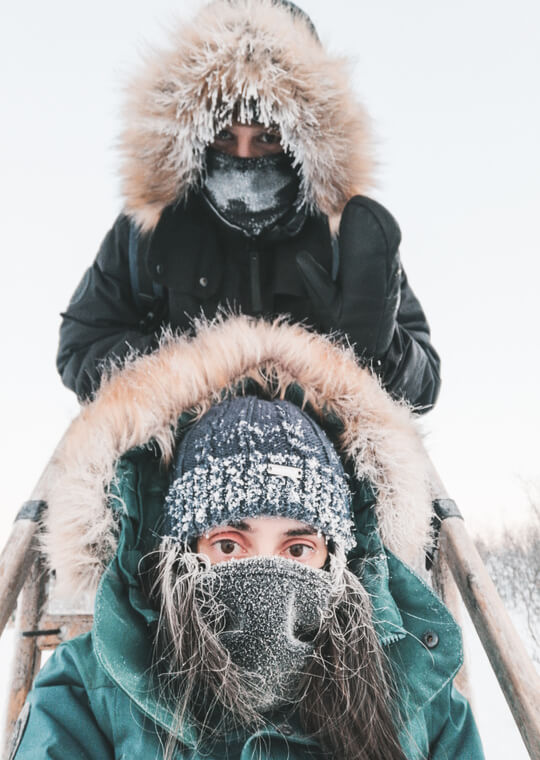

Putting together a packing list for Lapland seemed like a nightmare at first glance! I felt lost in the middle of so much information available on the subject.
I was quite lucky during my trip (most days the temperature was around -10 °C/14 °F). However, in the last two days, it dropped to -26 °C/-15 °F, with a real feel of -31 °C/-24 °F. That’s when things started to get serious. I really had to put into practice everything I’d read about 😉.
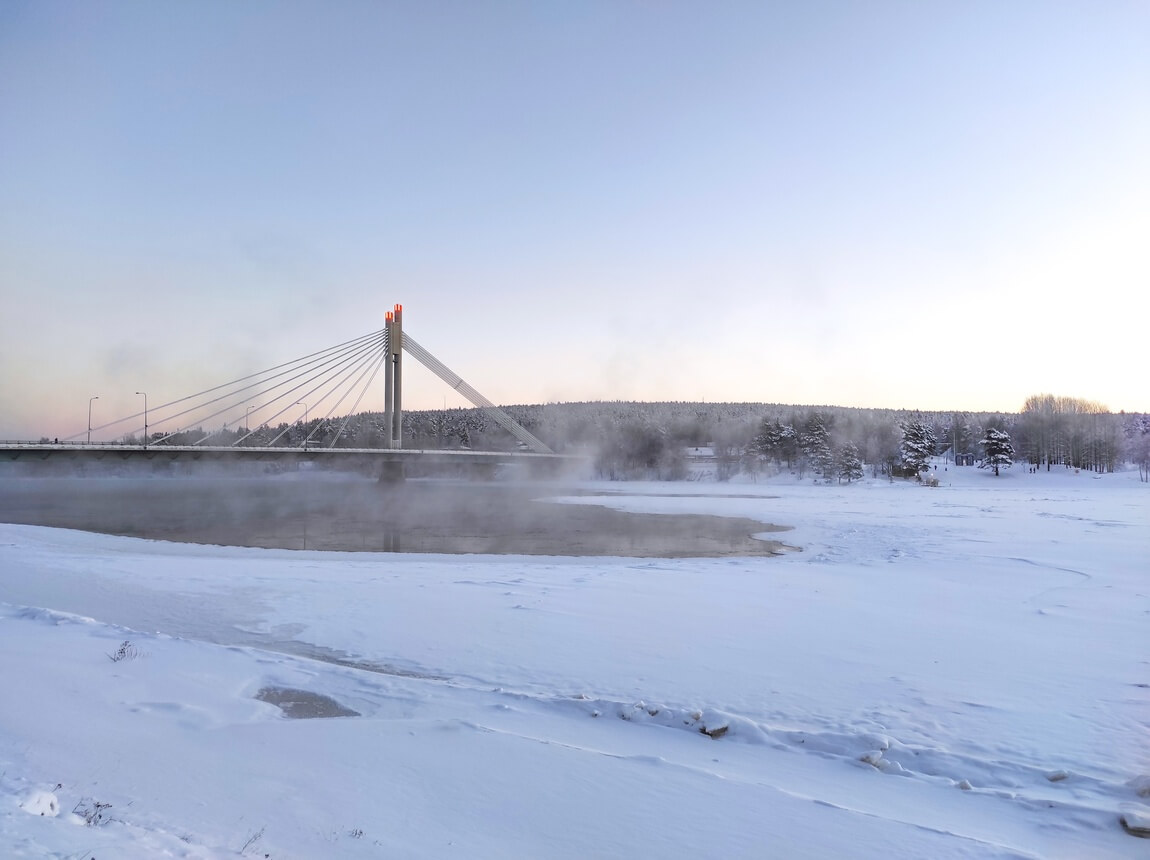
So, I want this post to be as useful as possible so you don’t feel lost when learning about what to pack for Lapland in winter.
After much reading, I concluded that everyone agrees on one thing. The secret weapon to survive the extreme cold and for your Lapland packing list is layers. Layers are important for many reasons (I’ll get that later)! But, for example, buildings are usually very warm inside, so be prepared to take off/put on clothes quite often.
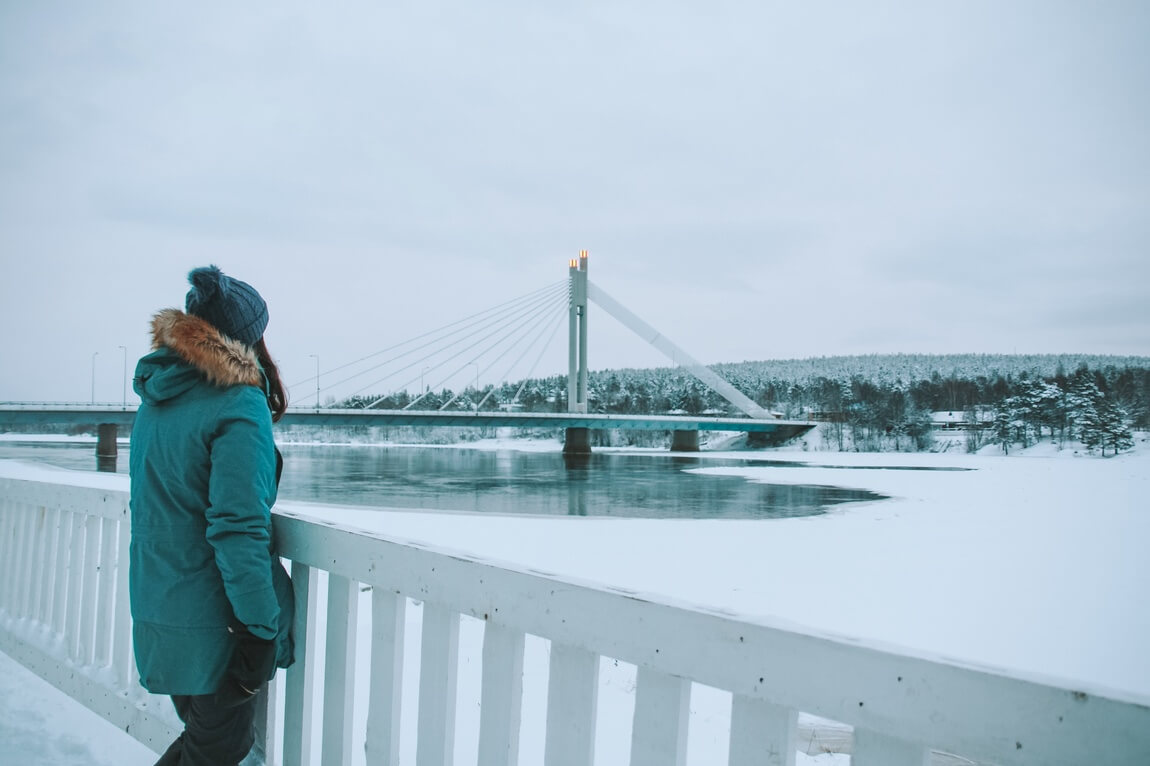
Another thing everyone seems to agree with is that your packing list for Lapland should have clothes with the right materials. If the fabrics of our clothes get wet, you’ll definitely regret it since you’ll get cold faster. That’s exactly what you want to avoid 😉.
In Lapland, the extreme cold isn’t just a background setting—it’s part of the experience. Knowing what to wear in Lapland in winter, can make or break your trip.
Almost every activity, from snowmobiling to reindeer sleigh rides to Northern Lights hunting, happens outdoors. So, knowing how to dress for extreme cold becomes essential.
Packing list for Lapland by body parts
I’ve divided these tips on what to bring to Lapland by body parts so it’s easier for you to learn about the subject!
Since I hadn’t experienced this kind of low temperatures before, I had almost no extreme cold weather clothes. Most likely, you’ll also need to buy some items for this Lapland trip. So, I’ll also be sharing everything I took with me to survive the cold weather.
How to keep the Upper Body Warm
A person with cold weather tends to perspire less and, for that reason, it’s not worth it to pack many thick jumpers. The key is changing the base layers since they’re the ones in greater contact with the skin!
Thus, for the upper body, we should wear between 3 and 4 layers:
1st layer:
- It should be tight to the skin to absorb any perspiration.
- The purpose of this layer is not to warm you up, but to ensure rapid absorption. Avoid cotton garments as much as possible as they have exactly the opposite effect.
- Look for merino wool or polyester
- I ended up buying the most basic range from Decathlon
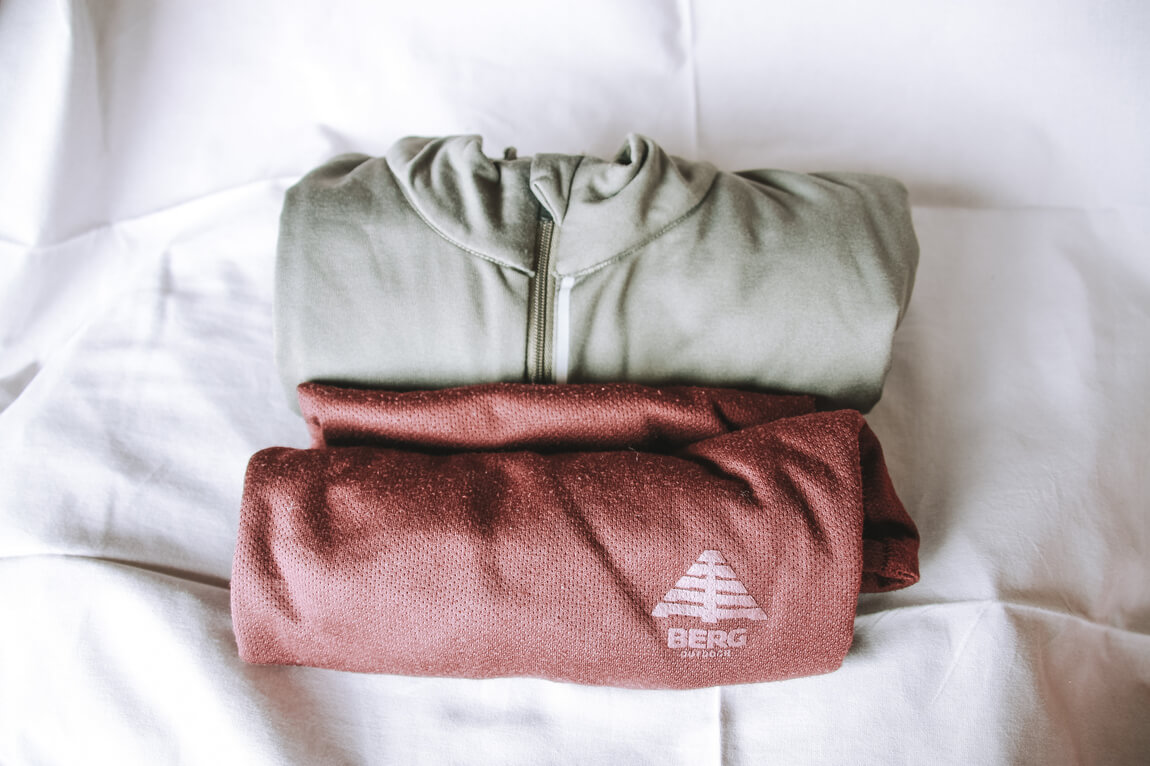
💡 EXTRA TIP: If you don’t plan to use these clothes in your daily life, opt for polyester garments. It’s cheaper, lasts longer and dries faster than merino wool. The great advantage of merino wool has to do with its breathability and greater resistance to odours.
2nd layer:
- This layer is there to help you retain body heat
- A polar (polyester) or flannel jersey is ideal (I bought one at Decathlon)
3rd layer:
- Preferably a thick wool jumper (doesn’t have to be 100% wool, but higher percentages of wool are preferable).
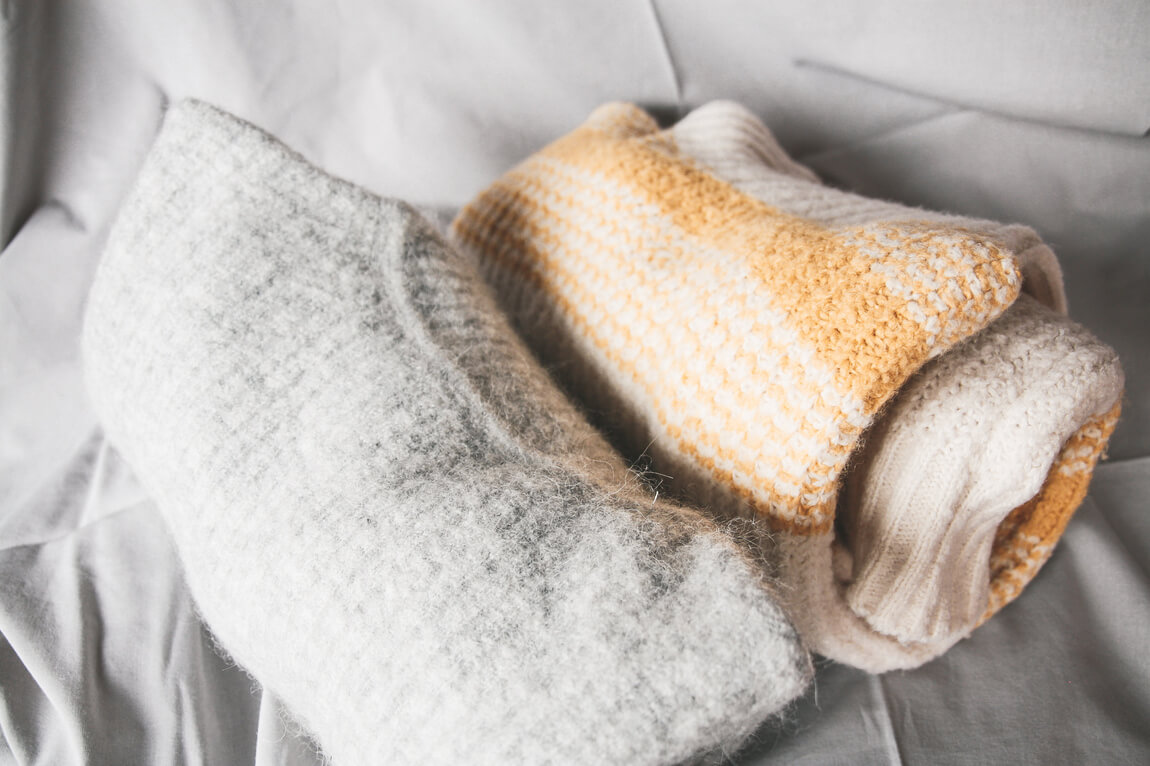
💡 EXTRA TIP: For temperatures until -15 °C/5 °F, these 3 layers are enough. For lower temperatures, add a 4th layer between the 1st and 2nd layers. A thinner and tighter wool jumper did the job for me 😊.
Finally, it is important to make sure you have a warm winter jacket that insulates you well from the wind. This jacket should also be waterproof so that you stay dry on snowy days.
PRO TIP: The longer the jacket, the warmer the legs will be. Plus, a hood can be very useful to keep your head warm (even if you wear a beanie). I know some tips on this Lapland winter packing list seem excessive, but believe me – they are not.
Winter in Lapland can be brutal and should prepare for it! I’m not trying to scare you, but it’s a wonderful destination. I just want you to know what to expect so you make the most of your trip to Lapland.
I honestly believe the outer jacket I bought was my most precious purchase for this trip. I went to Decathlon and got the warmest jacket available. It was a lifesaver!
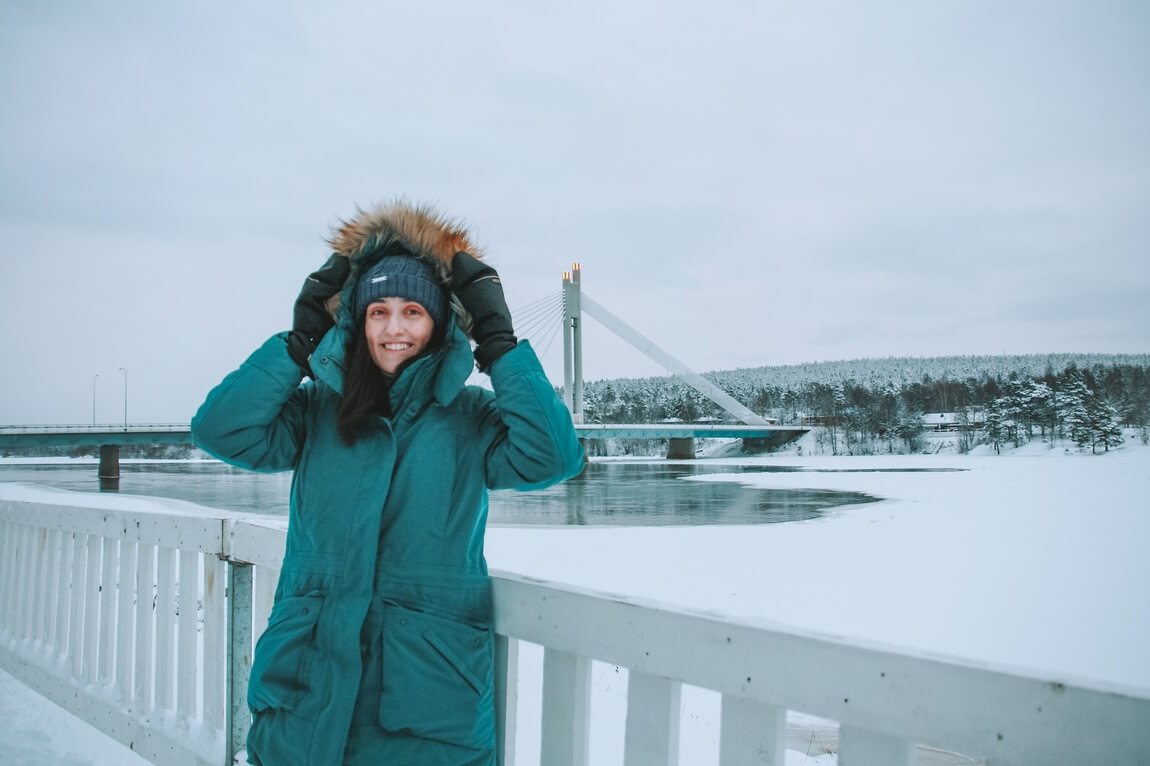
How to keep your legs warm
On the legs too, it’s important to use more than one layer:
1st layer:
- The purpose of this layer is yet again to absorb any perspiration
- Thermal trousers are the ideal choice
- Look for merino wool or polyester
- I bought the cheapest option at Decathlon
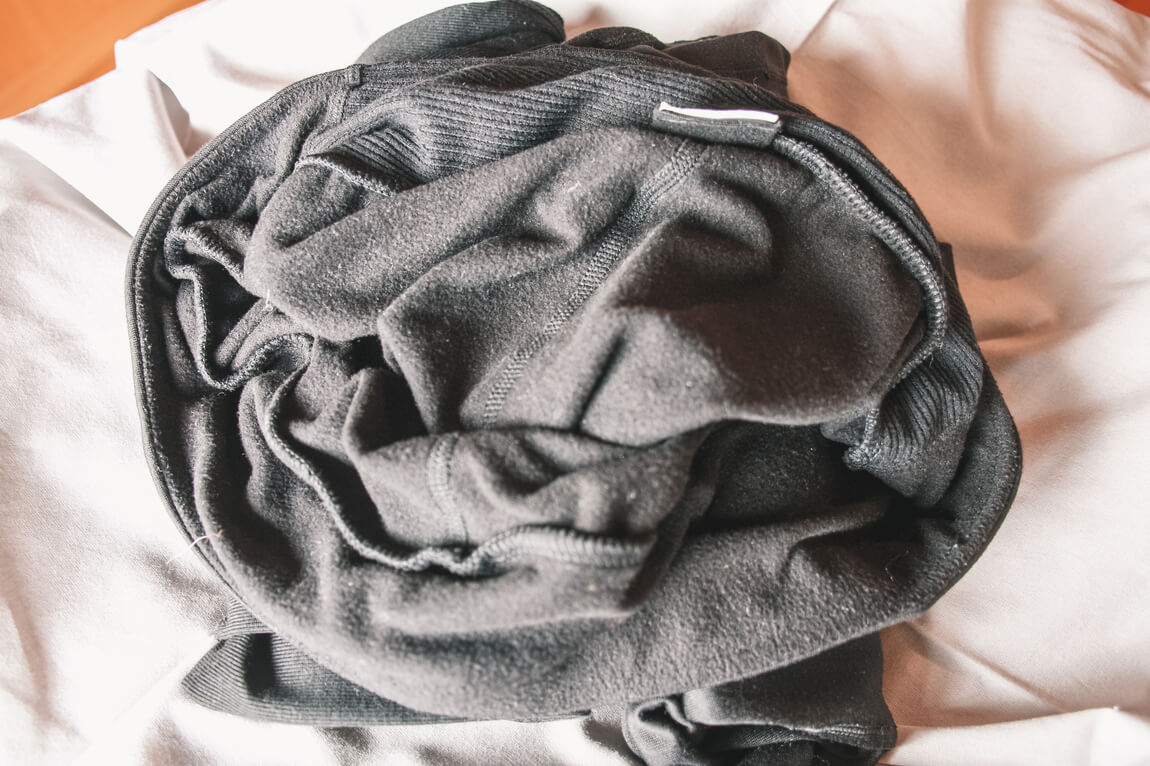
2nd layer:
- Waterproof snow trousers (often such low temperatures mean a high probability of snow, so we must be prepared)
- If possible, opt for thermal snow trousers for a warmer sensation
- I bought these snow trousers from Decathlon and they worked perfectly
💡 EXTRA TIP: In this case, it makes more sense to invest in the 1st layer trousers. These will be the only ones in direct contact with the skin. For a trip of 5 to 7 days, one pair of snow trousers should do the job. For temperatures below -15 °C/5 °F, add another pair of thermal trousers or some normal tights.
Protect your hands
Your packing list for Lapland must include good gloves and/or mittens. Forget about your simple woollen gloves. I recommend using a first layer of thinner gloves and then wearing mittens on top (preferably thermal inside).
Mittens allow the fingers to be closer together, which makes them warmer.
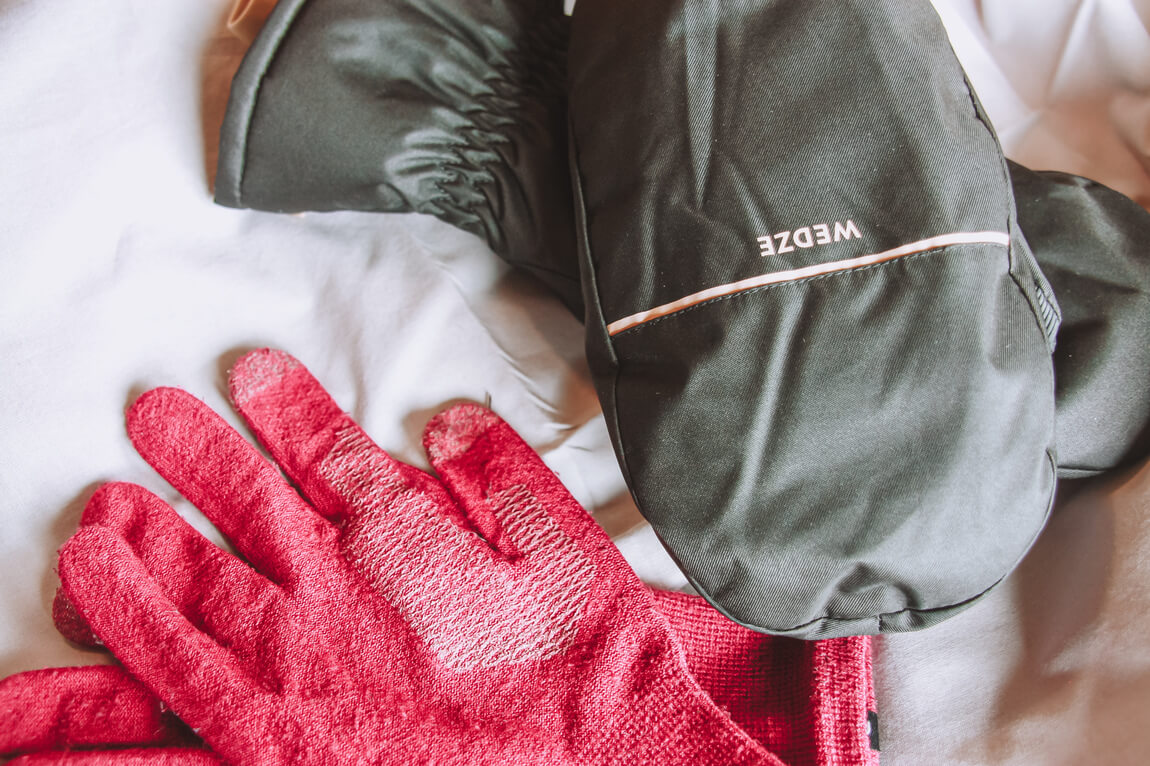
💡 EXTRA TIP: With temperatures this low, it is almost an impossible mission to have your hands exposed to the cold without any protection. If you plan to use a camera or a smartphone, buy a base pair of gloves that allows you to use smartphones. You’ll thank me when you don’t have to remove the gloves when you want to take some photos.
Don’t forget about your feet
Feet is one of our body parts that get cold the quickest. So, we have to take extra special care of them! And, once again, the secret is in the layers:
1st layer:
- Thinner woollen socks (the higher the percentage of wool, the better). I bought mine at a Portuguese store (Pé de Meia) but you can find some in your home country
- The logic is the same as for the other base layers: choose materials that allow good absorption of perspiration
2nd layer: thicker woollen socks – I bought these made from alpaca wool on Amazon.
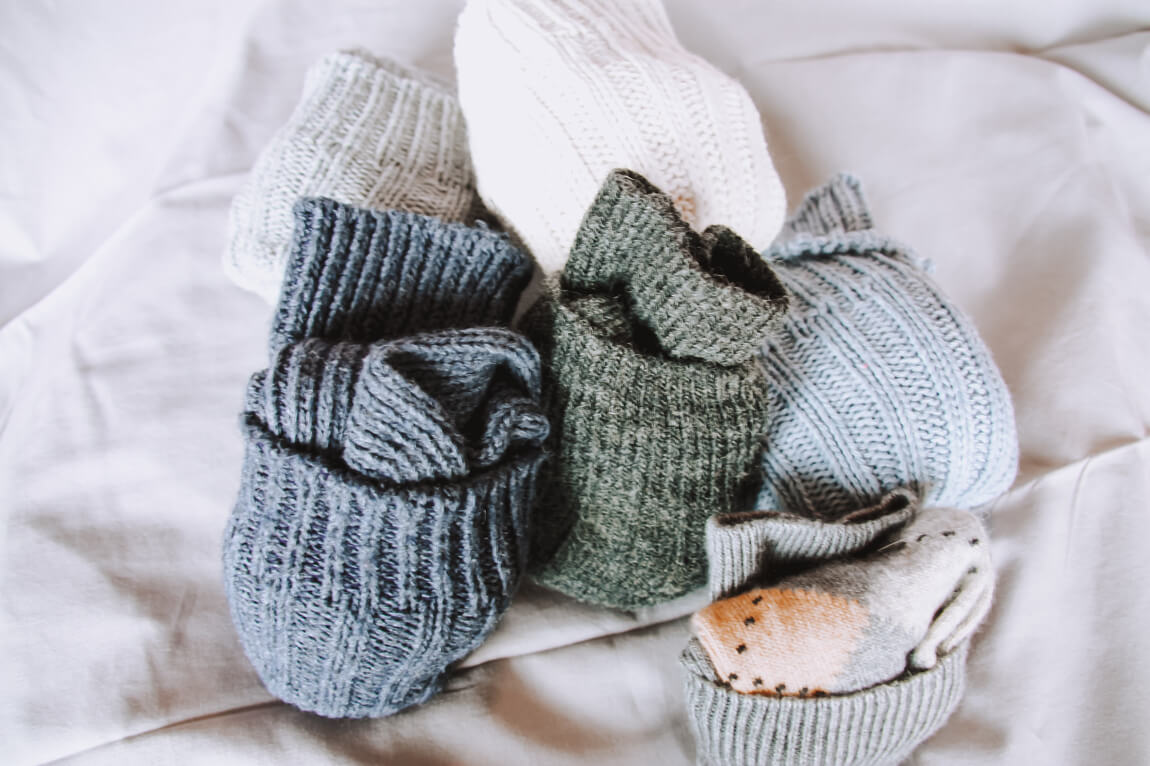
💡 EXTRA TIP: For days when the thermometer drops below -15 °C/5 °F, add an extra pair of wool or thermal socks to ensure extra warmth.
Finally, it is also important to ensure that we wear suitable footwear. You should go for boots with good traction for snow, waterproof and, if possible, carded for extra warmth.
It is important to ensure that the sole is made of 100% waterproof materials (rubber, for example). Plus, the sole should also be thick enough to dull contact with the cold ground. I went to Decathlon once again and opted for a pair from Quechua.
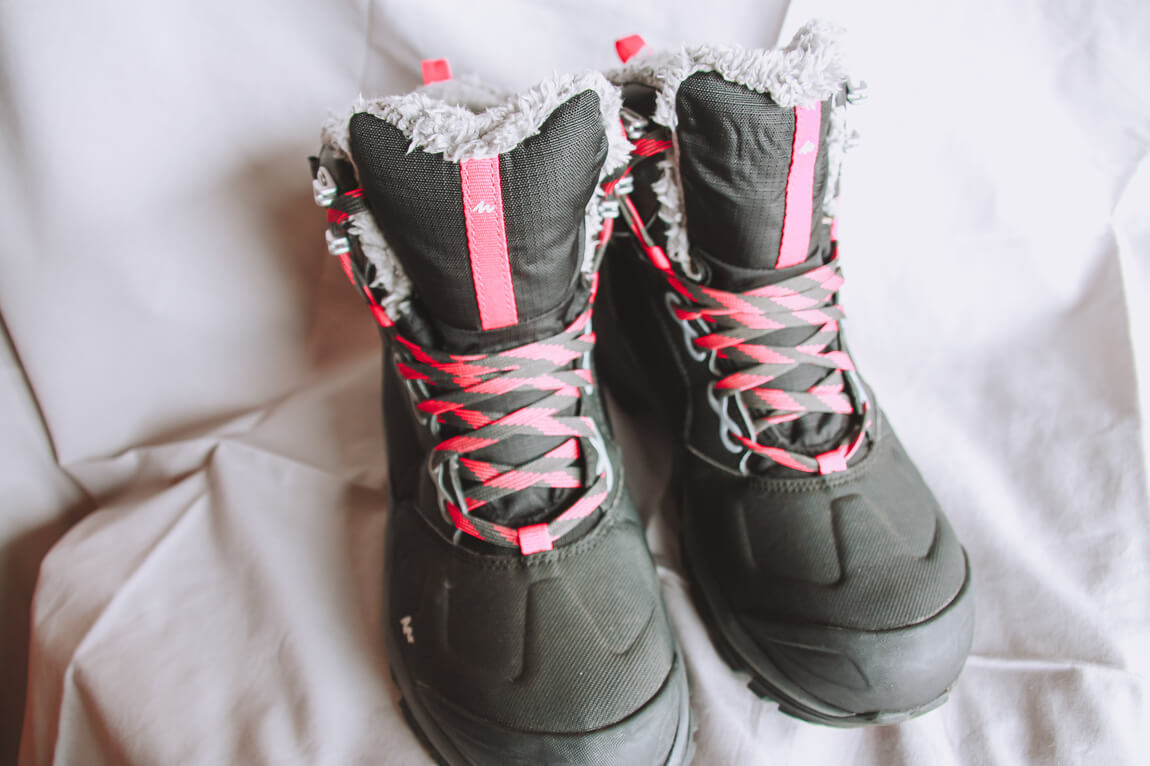
💡 EXTRA TIP: With the number of socks you need to wear, you should buy boots 2 to 3 sizes up from your usual size. If the foot is too tight (and the blood barely circulates), your feet will get colder quickly.
Don’t let the heat escape from your head
I’m sure you were already considering a beanie in your list of what to pack for Lapland😊. I already had some beanies, but I decided to purchase a warmer one, which gave me an extra warm feeling!!!
Plus, despite not always being necessary, consider buying a neck warmer. This can help you protect your nose, which, most likely, is exposed to the cold. Look for neck warmers made from merino wool, which absorbs well the air that comes in and out when we breathe.
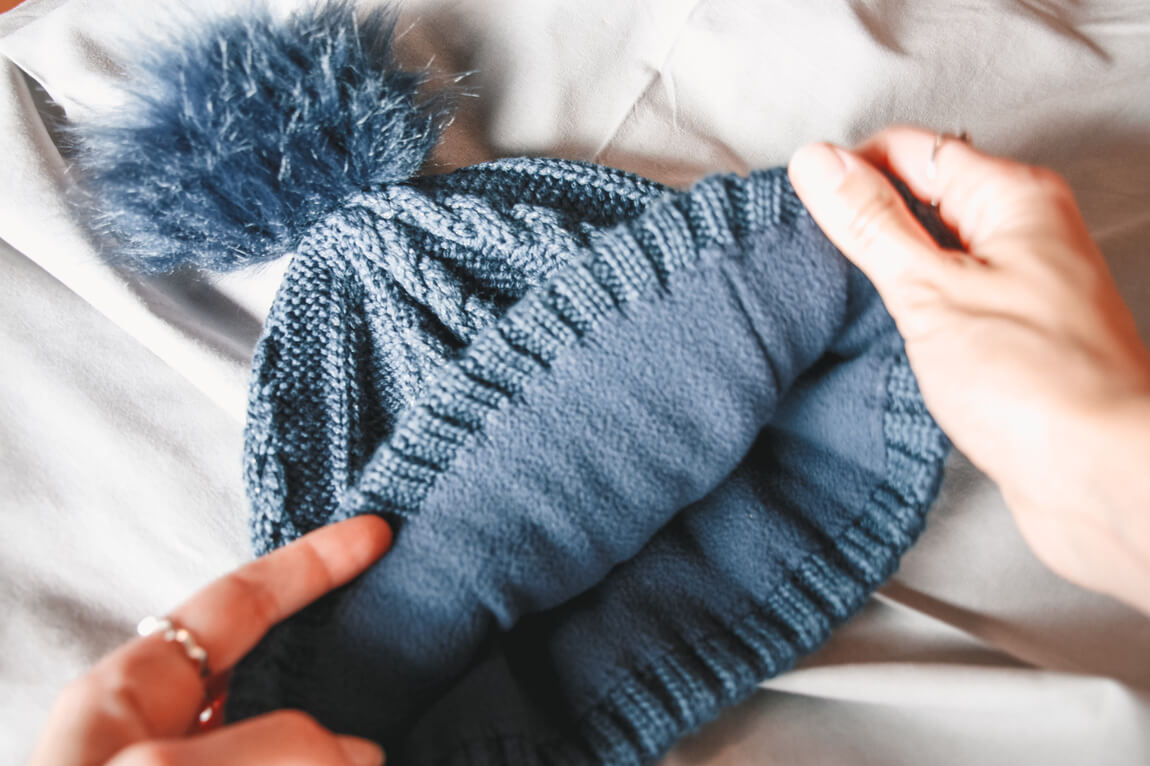
What to wear to Lapland: other tips
Another thing you can consider on your winter packing list is insoles made of natural fibres, like wool, for example. This is a lifesaver that will help your feet stay warmer. The cold from the ground doesn’t reach the feet so quickly.
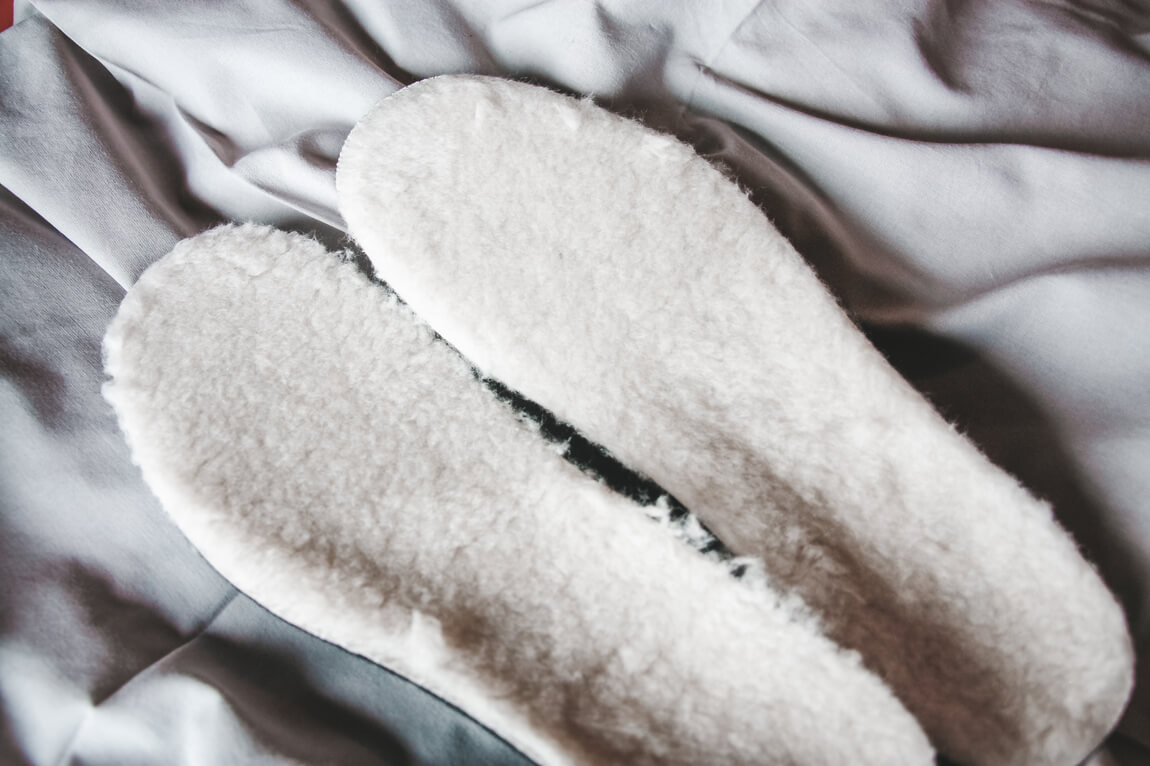
You can also invest in some warmers that provide heat to the feet, hands or body. These warmers are small sachets that you shake and put inside your boots, gloves or jacket. They radiate heat for up to 5 hours. I bought some Decathlon heating pads.
There are both disposable and reusable options. Disposable ones are super convenient, while reusable warmers are more eco-friendly. They’re particularly handy for stationary winter activities, like watching the Northern Lights, or whenever you need an extra boost of warmth.
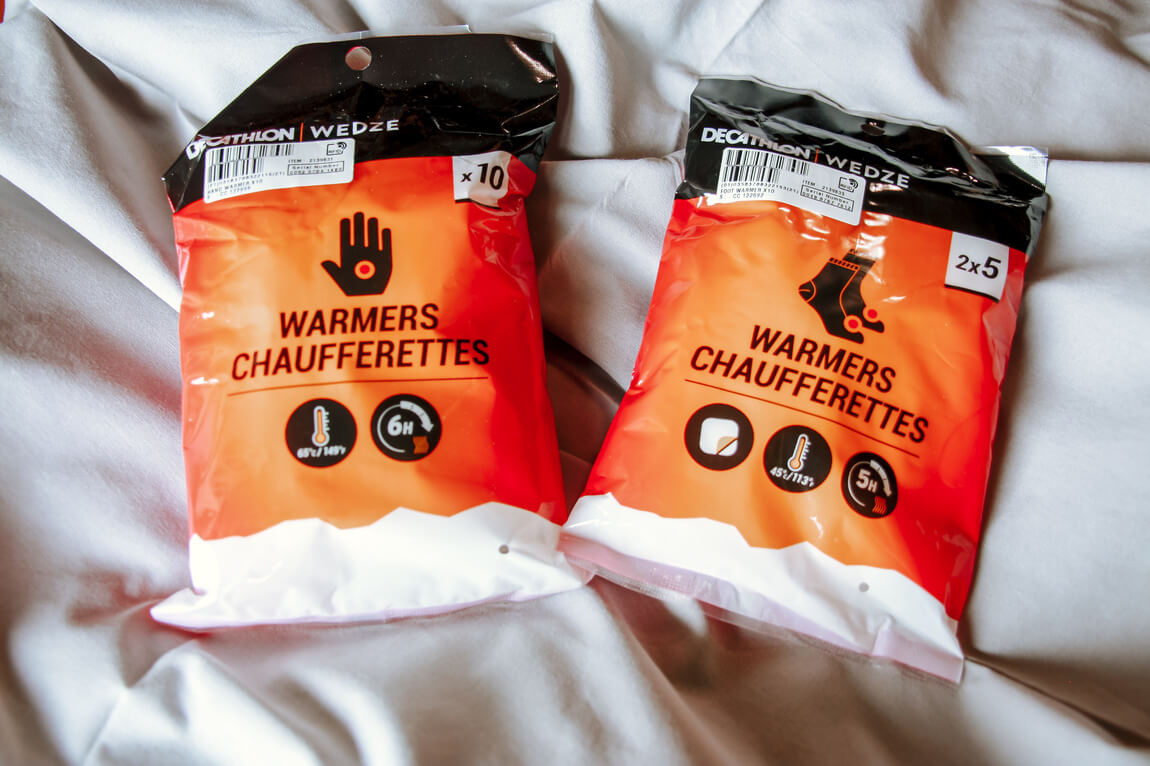
Packing Tips for Extreme Cold: Maximising Space and Staying Organised
The fabrics you choose for each layer are crucial. Knowing what to wear in Lapland and choosing the best materials can make a big difference in comfort and warmth. Here’s a quick guide on the best fabrics for each layer to help you pack smart.
Base Layer: Moisture-Wicking Fabrics
The base layer sits closest to your skin, so its main job is to wick away moisture to keep you dry. In freezing temperatures, even a small amount of sweat can make you feel much colder.
Merino wool and synthetic fabrics like polyester are ideal here. Merino wool is breathable, highly effective at insulating, and resists odours, so you can re-wear it if needed. Polyester is another good option and tends to be more affordable while also drying quickly.
The biggest advice I can give you is to avoid cotton. It retains moisture, which can make you feel colder faster.
Mid-Layer: Insulating Fabrics
The mid-layer traps body heat to keep you warm. This is where you want fabrics with excellent insulation properties, such as fleece, down, or wool.
Fleece is lightweight, breathable, and offers great warmth without too much bulk, making it a popular choice for active days.
Down is a powerful insulator and extremely warm for its weight, although it’s best to keep it dry, as it loses insulation when wet.
Wool is also highly insulating and keeps you warm even if it gets a bit damp, making it versatile for fluctuating conditions in Lapland.
Outer Layer: Waterproof and Windproof Fabrics
The outer layer acts as your shield against snow, wind, and moisture, so waterproof and windproof materials are essential.
Thinner woollen socks (the higher the percentage of wool, the better. I bought mine at a Portuguese store (Pé de Meia) but you can find some in your home country.
High-quality outer layers with sealed seams offer maximum protection, helping you stay warm.
Putting together a packing list for Lapland that includes each of these fabric types can help you layer effectively. You’ll stay comfortable no matter how low the temperature drops.
Packing Tips for Extreme Cold: Maximising Space and Staying Organised
Packing for Lapland’s winter requires smart planning. With thick layers and bulky gear, it’s easy for your suitcase to fill up fast. Here are some practical tips for packing for extreme cold while keeping your bag manageable.
Use Compression Bags
Compression bags are lifesavers for what to pack for winter vacation. They help flatten bulky items like jackets and wool jumpers, saving precious space. Seal up each piece of thermal clothing for extreme cold after folding it tightly. This keeps your suitcase compact, leaving room for essentials.
Organise by Layers
When dressing for extreme cold, you’ll often be layering up. To make it easier, pack by layer type. Group your base layers, mid-layers, and outerwear together, so you’re not searching through everything each time.
This method is especially handy where fast changes between outdoor and indoor temperatures are common.
Minimise Bulky Items
Not every piece of clothing needs to be thick. The trick for what to wear in extreme cold is using quality fabrics and focusing on the most effective pieces.
Pack one or two base layers for each day but limit bulkier items like jumpers or ski trousers to what’s necessary. Layering lets you stay warm without overpacking.
Keep Essentials Handy
For added warmth, pack accessories like gloves, scarves, and beanies where they’re easy to grab. These items don’t take up much space but are vital for staying warm.
Making these essentials easy to reach can make all the difference when you’re stepping off a warm plane into the frosty Lapland air.
With these efficient packing tips, you’ll be set for your Lapland adventure without overstuffing your bag.
PS: I’m usually all about packing light and travelling with just a backpack. But, for Lapland, that’s almost mission impossible! With so many bulky essentials needed for the extreme weather, fitting everything into a small bag just doesn’t cut it. This trip definitely requires a little more space.
Essential Gear for Lapland: Must-Haves Beyond Clothing
Your packing list for Lapland goes beyond clothing. The extreme cold affects everything from tech to personal comfort, so here are some extra items to pack for a smooth, memorable trip.
Power Banks
In the cold, phone batteries drain faster, so keeping a power bank handy is essential. I remember my phone absolutely dying before going on my huskie ride because it was too damn cold.
A high-capacity power bank can keep your devices charged throughout long days of exploring.
Camera Gear for Low Light
If you’re planning to photograph Lapland’s winter wonderland or capture the Northern Lights, invest in a camera designed for low-light settings, along with a sturdy tripod.
Extra batteries are also a must, as they’ll run down quickly in the cold.
Moisturiser and Lip Balm
The cold, dry air can be rough on your skin, so a good moisturiser and lip balm are essentials for keeping skin comfortable.
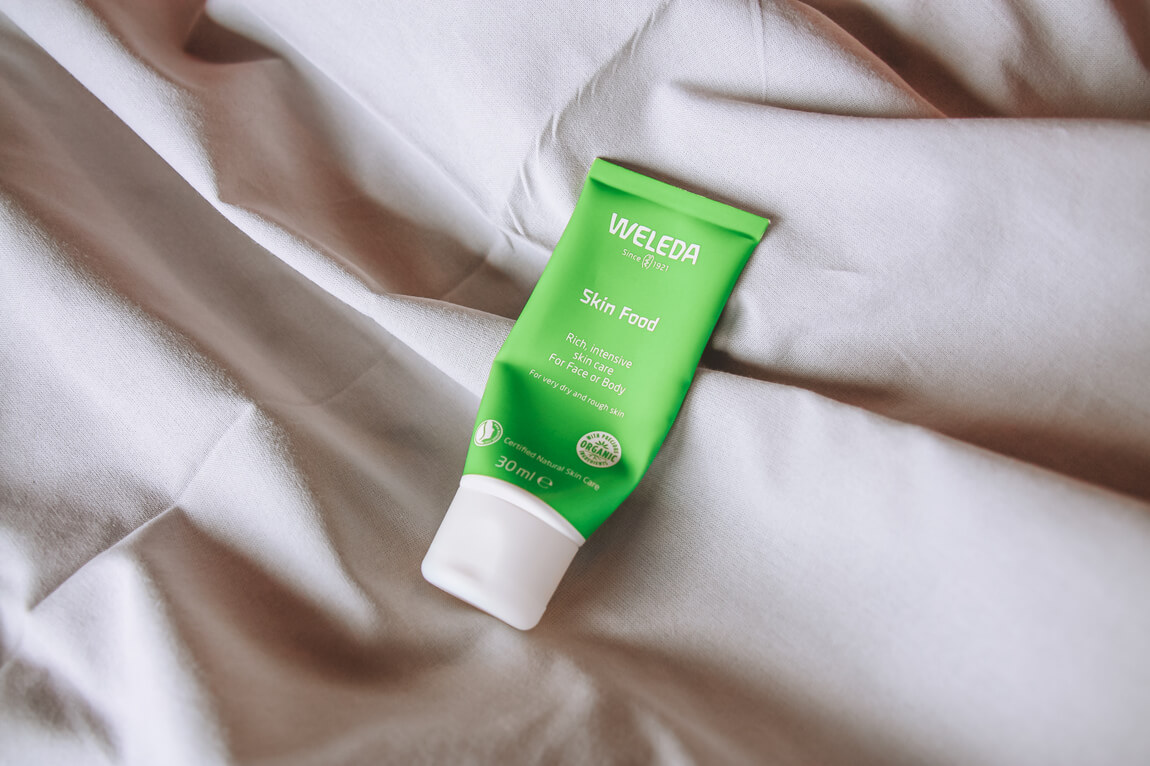
This lotion from Weleda was a real lifesaver. I applied it every night on my face and it didn’t even get dry even with the freezing temperatures in Lapland. I also applied it several times a day on my hands, to always ensure maximum hydration 😊.
Headlamp or Flashlight
Lapland’s winter days are short, and many activities, like Northern Lights viewing, happen in the dark.
A compact headlamp or flashlight is invaluable for navigating icy paths or even adjusting your camera settings. If you’re booking tours to do these activities, you won’t probably need these though since most companies will provide these essentials.
Insulated Water Bottle
It’s easy to forget to stay hydrated in the cold. An insulated water bottle can keep your drinks from freezing and make it more tempting to sip throughout the day. I forgot to take one with me and remember the water freezing inside the bottle. Not fun when I was thirsty!
Packing these essentials ensures you’re well-prepared, allowing you to focus on enjoying all that Lapland’s winter magic has to offer!
Frequently Asked Questions about What to Pack for Lapland in Winter
How cold does it actually get in Lapland?
In winter, temperatures in Lapland often range from -10 °C to -20 °C (14 °F to -4 °F), but they can drop as low as -30 °C (-22 °F) or even colder.
The wind chill can make it feel even lower, which is why dressing for extreme cold with proper layers is crucial. Always check the local weather forecast before your trip to be prepared.
Is it worth buying new gear for a single trip to Lapland?
If you’re only visiting Lapland once, it might seem unnecessary to invest in a lot of new winter gear. However, proper clothing and equipment are essential for dressing for extreme cold.
To avoid overbuying, focus on key items like thermal clothing for extreme cold and a quality winter jacket. For base layers and accessories, more budget-friendly brands, like Decathlon, offer effective options. I bought most of the things there.
Alternatively, consider renting larger or high-cost items, such as snow boots and ski jackets, which can save money and space.
Should I rent any gear in Lapland?
Yes, renting can be a great option, especially for bulky items that are used specifically in extreme cold.
Many Lapland tour providers offer rentals for essentials like snow boots, snowsuits, and gloves. Renting allows you to pack lighter. Plus, it ensures you have high-quality, weather-appropriate items without the full expense.
Just be sure to check availability and reserve items in advance if possible.
How many layers do I really need to wear in Lapland?
The main thing you should retain about what to wear in extreme cold is layering.
Three layers are enough: a moisture-wicking base layer, an insulating mid-layer, and a waterproof outer layer.
On extremely cold days, you may want to add an extra thin layer between your base and mid-layer. Take this into account particularly for outdoor activities or prolonged exposure.
Are hand and foot warmers worth bringing?
Absolutely. Small hand and foot warmers are inexpensive yet invaluable for staying comfortable in the extreme cold. These little heat packs can keep your extremities warm for hours. This is especially useful when watching the Northern Lights or during slower activities like sleigh rides.
What type of bag should I bring? A backpack or a suitcase?
While I’m typically a fan of backpack travel, packing for Lapland winter is an exception due to the bulkiness of winter clothing and gear.
A cabin-size suitcase should be enough, as it allows room for layers and gear without overcrowding. Either way, consider using compression bags to save space and keep items organised. Most winter clothing tends to be bulky.
Do I need specialised camera equipment for the Northern Lights?
To capture the Northern Lights effectively, a camera capable of long exposures is best, along with a tripod to keep it steady.
Cold weather drains batteries quickly, so pack extras and keep them close to your body for warmth. While not mandatory, this equipment will make a big difference for anyone hoping to get clear night-time photos. If you have a camera but don’t know how to photograph the Northern Lights, book a Northern Lights Photography Tour.
Can I wear make up in Lapland?
Yes, but waterproof makeup is essential! In extreme cold, your eyes will likely water more, which can cause regular mascara or eyeliner to smudge. Trust me! I learned the hard way on my first day in Lapland. After that, I skipped both mascara and eyeliner.
Stick to hydrating products, like cream-based foundations, and bring lip balm and moisturiser to keep your skin comfortable in the dry air. With a few adjustments, you can keep your makeup looking fresh, even in Lapland’s cold!
Final Thoughts
Packing for Lapland may seem daunting, but with the right approach, you’ll be fully prepared for the extreme cold. I’ve survived extreme weather while visiting Lapland and I did ok, so you can do it too!
Here are the key takeaways to help you with your packing list for Lapland:
- Layers are essential: Base, mid, and outer layers keep you warm and adaptable.
- Choose the right materials: Go for moisture-wicking, insulating, and waterproof fabrics.
- Invest in essential gear: Thermal clothing, insulated accessories, and warm boots are must-haves.
- Pack smart: Use compression bags, minimise bulky items, and keep accessories handy.
- Extra essentials matter: Bring power banks, moisturiser, and hand warmers to stay comfortable.
With these tips, you’ll stay warm and fully enjoy the snowy beauty of Lapland’s winter wonderland! If you want more tips, check out my ultimate guide to visit the Finnish Lapland during winter.
If you have questions or more packing tips, I’d love to hear from you. Drop a comment below to share your thoughts and help fellow travellers get ready for their Lapland adventure!
Disclaimer: this post may contain some affiliate links, which means I get a small commission if you buy something through my links. This doesn’t represent any additional cost to you and you’ll be supporting my work here on the blog😊

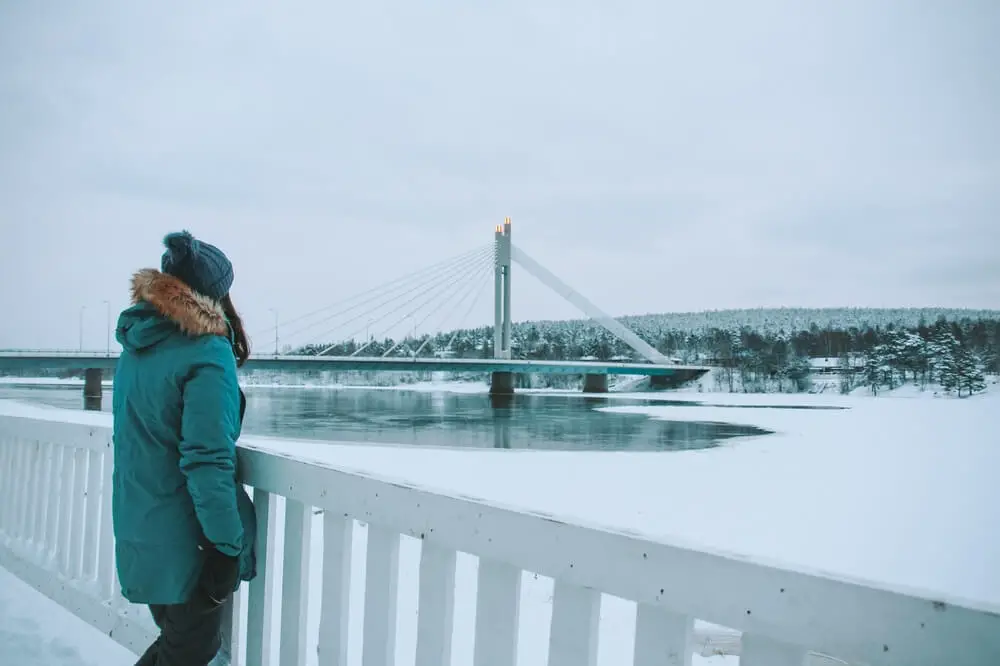





How do you prepare your skin before going out at morning?? Plz share your skincare routine during trekking
Hi there,
When I am travelling, I always put my sunscreen first, then my hydrating cream and then cc cream and everything else. However, I must say that in such cold weather, it was impossible to use eyeliner and mascara because your eyes often get wet with all the cold. You can try waterproof products but I didn’t have those when I travelled to Lapland.
I hope this helps!
Happy travels,
Mariana